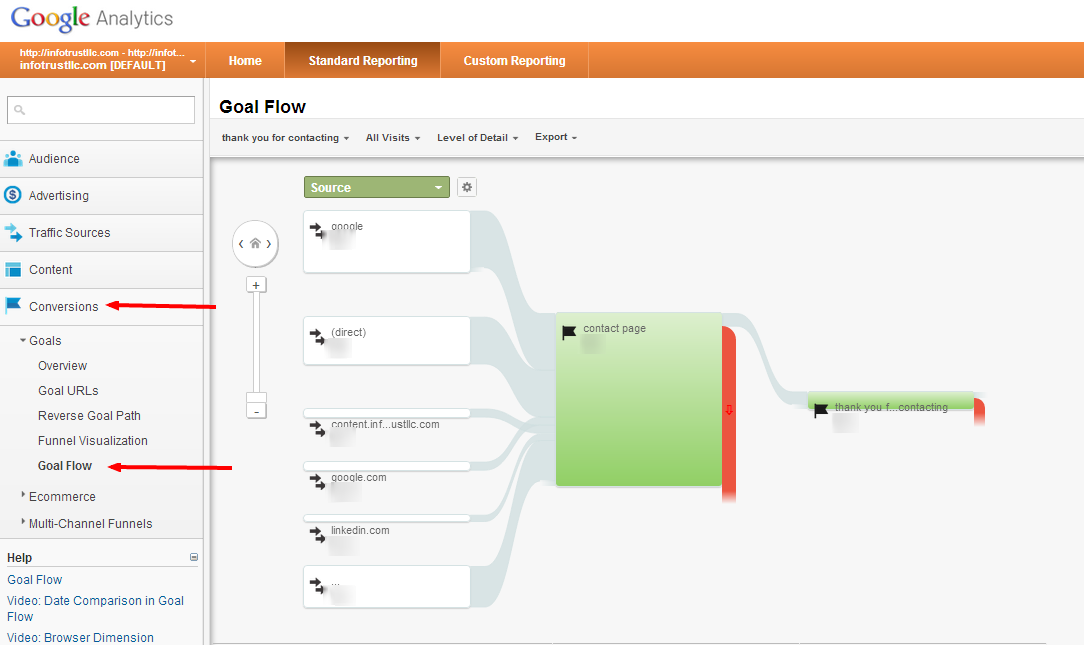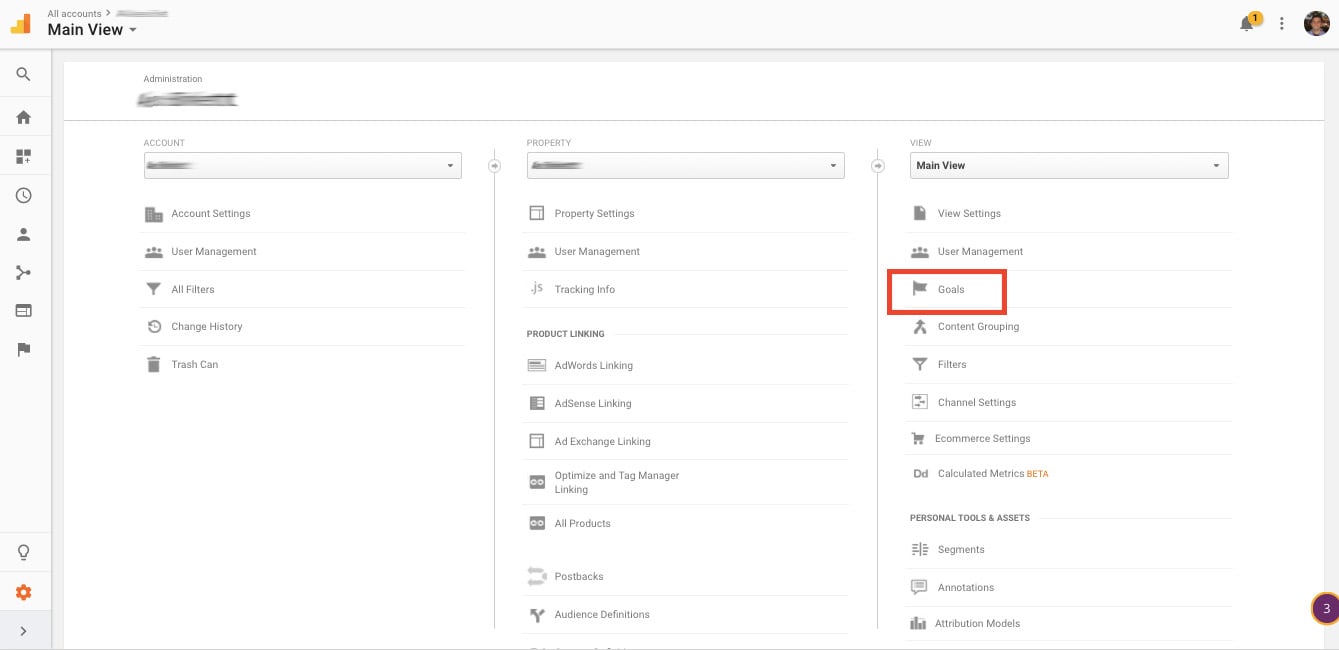Discover What Data Is Google Analytics Goals Unable to Track
Discover What Data Is Google Analytics Goals Unable to Track
Blog Article
Discover the Limitations of Google Analytics Goals: Introducing the Information Types That Remain Untrackable
As services increasingly count on data-driven decision-making, understanding the limitations of devices like Google Analytics becomes critical. While Google Analytics Goals offer useful understandings right into customer interactions, there exist information types that thwart monitoring, presenting obstacles to an extensive understanding of user behavior.
Incomplete Individual Journey Tracking
Incomplete user journey tracking within Google Analytics can impede the capacity to properly analyze individual habits. When the user journey is not fully tracked, there are spaces in the information that prevent an extensive understanding of just how customers interact with a web site. This lack of insight can cause missed possibilities for optimization and renovations to the user experience.
One common issue with incomplete user journey monitoring is the lack of ability to see the complete path that users take in the past finishing an objective or leaving the website. Without this information, it is testing to identify where individuals may be coming across challenges or friction points that stop them from transforming. In addition, insufficient tracking can cover the effect of particular advertising and marketing efforts or site modifications on user actions.
To address this constraint, it is critical to establish proper tracking devices within Google Analytics to catch the entire customer journey. This might include establishing up event monitoring, goal funnels, or using devices like Google Tag Manager to ensure that no crucial interactions go unrecorded. By getting an extensive sight of the individual trip, site proprietors can make more informed choices to enhance customer engagement and drive conversions.
Acknowledgment Obstacles
Navigating through acknowledgment challenges in Google Analytics needs an extensive understanding of how various touchpoints add to the general conversion process. Acknowledgment difficulties emerge from the complexity of contemporary customer journeys, where customers connect with several networks before converting. Google Analytics gives various acknowledgment versions like initial touch, last touch, and linear, each providing a various viewpoint on how credit rating is designated to touchpoints along the conversion course. These versions may not always precisely show the real influence of each touchpoint on the conversion.
One typical attribution obstacle is the trouble in connecting conversions to the correct source, specifically in cases where individuals connect with multiple channels prior to transforming. Furthermore, cross-device monitoring poses an additional attribution challenge, as users frequently switch between devices during their trip, making it testing to track their interactions perfectly.
Offline Conversions
Provided the difficulties connected with connecting conversions properly in online channels, the dimension of offline conversions offers a significant opportunity for marketing experts seeking an extra thorough understanding of their clients' journey. Offline conversions describe activities that clients take in the real world, such as making acquisitions in brick-and-mortar stores or over the phone, attending events, or engaging with printed materials - what data is google analytics goals unable to track. a knockout post These conversions are important for businesses that operate both online and offline, as they give Learn More useful insights right into the efficiency of marketing projects across numerous touchpoints
Tracking offline conversions typically presented a substantial challenge for marketers, as it was challenging to link these actions back to particular online interactions precisely. With improvements in modern technology, such as the combination of CRM systems, special identifiers, and discount coupon codes, organizations can currently link the gap in between online and offline information to obtain a much more alternative view of customer habits. By efficiently determining offline conversions, marketing professionals can optimize their strategies, allot sources much more successfully, and eventually boost the overall consumer experience.
Cross-Device Monitoring
Cross-device tracking plays a crucial role in recognizing the interconnected nature of customers' digital communications across numerous gadgets. In today's omnichannel world, where customers seamlessly change between tablet computers, desktop computers, and mobile phones, tracking their behavior across these devices is important for marketing experts to gain a thorough view of their customer trip.

Additionally, personal privacy worries and laws such as GDPR and CCPA have additionally challenging cross-device monitoring. With customers requiring more control over their data and increased restrictions on monitoring innovations, marketing experts should locate innovative and privacy-compliant means to connect user interactions across gadgets.
Dynamic Material Interaction
Recognizing customer interaction with vibrant web content is crucial in maximizing digital advertising and marketing approaches for boosted audience communication. Dynamic material describes site elements that transform based on customer habits, choices, or various other variables, offering a personalized experience. Nonetheless, tracking individual interactions with vibrant content presents difficulties for traditional analytics tools like Google Analytics.
While Google Analytics can track standard communications like clicks and page sights, it might struggle to capture even more nuanced engagements within dynamic material. what data try these out is google analytics goals unable to track. Metrics such as time invested in details vibrant components, float actions, or communications within pop-ups are often not quickly measurable utilizing common monitoring techniques. This limitation impedes online marketers' ability to totally realize how individuals are engaging with vibrant content and tailor their techniques accordingly

Final Thought
In verdict, Google Analytics goals have limitations in tracking insufficient user trips, connecting conversions accurately, catching offline conversions, tracking cross-device communications, and measuring vibrant web content involvement. These constraints highlight the importance of checking out extra tracking methods and tools to obtain an extra detailed understanding of customer behavior and conversions beyond what Google Analytics can offer.
While Google Analytics Goals offer valuable insights right into user interactions, there exist data types that thwart tracking, posing obstacles to a comprehensive understanding of customer habits.Insufficient individual trip monitoring within Google Analytics can hinder the ability to precisely evaluate individual behavior. When the user journey is not totally tracked, there are spaces in the information that prevent a detailed understanding of just how users connect with a website.One usual problem with insufficient user trip tracking is the failure to see the complete course that users take previously finishing a goal or leaving the site. By getting an extensive view of the user trip, site proprietors can make even more informed choices to boost customer interaction and drive conversions.
Report this page